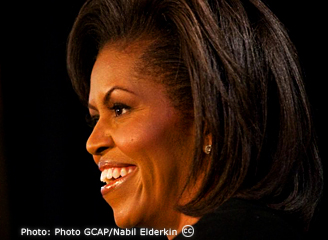After ducking the matter for a decade, U.S. environmental organizations finally pulled together a climate policy, but the National Call to Action on Global Warming issued by 53 organizations on March 5 is a mistake and should be reconsidered.
The National Call contains key elements that have been startlingly absent from our efforts to date — an assessment of climate risk, bright-line definition of solution, and a platform — but in attempting to thread a path between fundamentally irreconcilable political worldviews, the groups have fashioned a pushmepullyou compromise that will not gain us the traction we now require and squanders moral capital won at cost.
The National Call was hurried into place when it became clear that the irredeemably flawed cap-and-trade agenda of the U.S. Climate Action Partnership would otherwise be adopted by default. Yet, instead of coming down emphatically, if belatedly, behind Jim Hansen’s precautionary analysis and focusing on the central questions facing humanity — “how bad is it?” how much time do we have left?” and “what do we have to do to avert cataclysm?” — our major organizations choose to fudge the science and aim for something much smaller then the reordering of civics, economy, and society required to avert cataclysm.
What could and should be an illuminating, spirited civic debate between two sharply defined and fundamentally contradictory worldviews is now muddied by the introduction of a confused and confusing middle road position advanced by respected climate leaders. Split into three camps, we are further than ever from sharpening our story and worse off then before the National Call was issued.
No attempt was made to hide the illogic of the National Call, which claims to stand on “climate science” yet recommends inadequate, lower-end IPCC targets based on essentially antique science which does not fully encompass the risk of abrupt climate change. A bland statement acknowledging this fact (“more recent findings since the publication of the latest IPCC assessment suggest that even more urgent action may be needed”) is included in the Call without clarification or conclusion.
This throwaway statement, however, is the nub of the matter, because all recent evidence on factors affecting the pace and scale of ice shelf break-up in Antarctica and Greenland — the climate change “world killer” — is very, very grim, and all projections of fossil fuel use and GHG emissions continue to rise steeply. It could not be clearer that we are running the last lap and there will be no opportunity for “do-overs.”
What’s going on here? None of our organizations and leaders truly disagree with the precautionary position as a matter of science, so why did 53 sign on to an statement calling for less than we know is now necessary to avert catastrophe?
Six organizations — 350.org, Rainforest Action Network (RAN), Friends of the Earth (FOE), International Rivers Network (IRN), GlobalWarmingSolution.org and, contrary to original reports, Al Gore’s Alliance for Climate Protection — did not endorse the National Call and there are indications that the decision does not sit comfortably with every group which did. People should be worried, because the National Call puts the majority of our organizations on the same slippery track that compromised the integrity of EDF and NRDC.
I have a half-formed idea that the critical factor for leadership and organizations is no longer whether one accepts the reality of abrupt climate change, as it was for the last 10 years, but whether one believes in the possibility of abrupt political change and is willing to work for it. If so, then there is no reason at this stage to support inadequate compromises that cannot avert cataclysm and will merely run out the clock. We’re playing winner take all now.
If one cannot imagine a new American revolution, or shudders at the thought, then I suppose there is appeal in cutting the best deal going and hoping that Hansen et al. are wrong, but as a matter of strategy, it’s still the bad move. Whether or not “non-linear” social change is thought likely or desirable, driving toward it improves the outcome either way.
Environmentalist power is proportional to our moral authority, not our facility at brokering, and our moral authority is diminished when we speak less then the truth. The National Call to Action on Global Warming, relying on out of date IPCC science, is knowingly built on a foundation of sand. It reduces our moral authority (and we ought to start thinking about our members, donors, and staff in this regard) and should be reconsidered.
Having won consensus for joint action — a tremendous step forward — we must assert the new power that can and should have flowed from the achievement, and the best way to do so is by endorsing Jim Hansen’s call for a 300-350 ppm bright line. If we do this, then we act as a responsible movement, coalescing behind two opposed visions of political change and measures of appropriate precautionary behavior. If we do not do this, we churn already muddy waters and are worse off then if we had done nothing.



